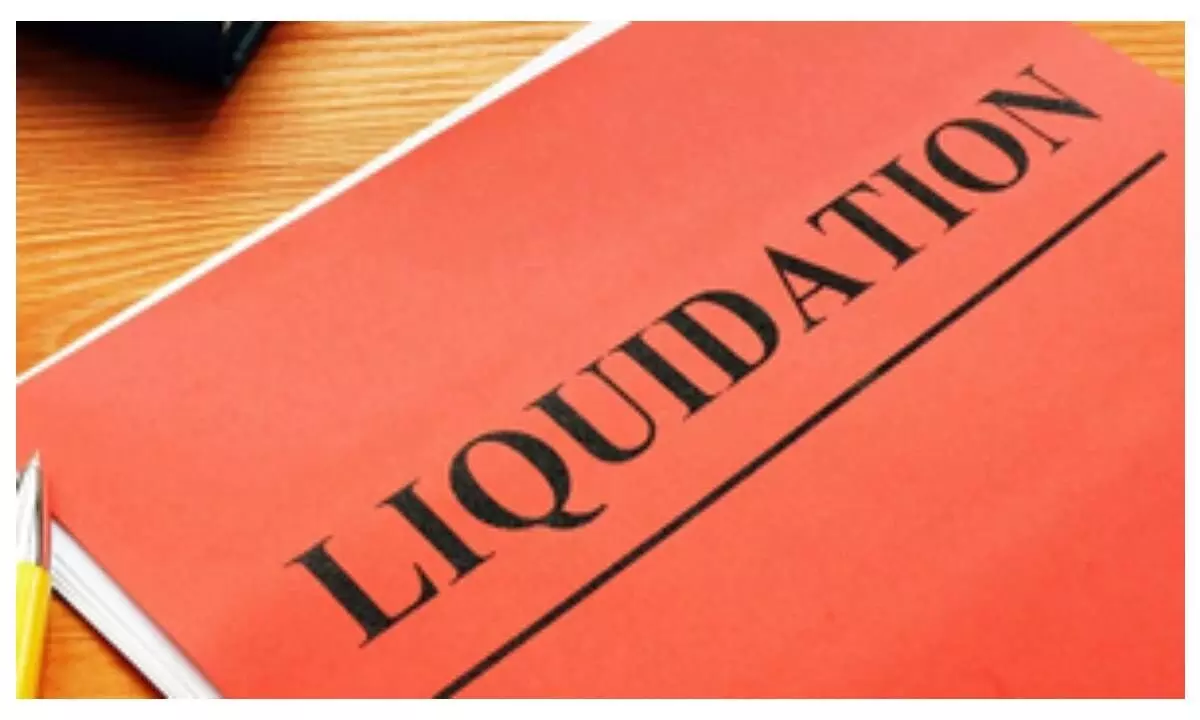Liquidation remains most common path of closure for cases under insolvency resolution process.
Liquidation (accounting for 45 per cent of all closed cases) remains the most common path of closure for cases under the insolvency resolution process, according to a report by Kotak Institutional Equities.
image for illustrative purpose

New Delhi, Nov 17: Liquidation (accounting for 45 per cent of all closed cases) remains the most common path of closure for cases under the insolvency resolution process, according to a report by Kotak Institutional Equities.
As of 2QFY24, 67 per cent of ongoing cases have passed 270 days since admission, with another 13 per cent crossing 180 days.
Hence, the number of cases facing liquidation is likely to stay high, the report said.
Haircut on resolved cases under IBC continues to be high at 68 per cent of total claims, as per the report.
The total amount of debt resolved through the IBC stands at Rs 9.9 tn. Resolutions have risen with 2QFY24 seeing a resolution of Rs 650 bn of debt, resulting in realization by financial creditors of Rs 208 bn (32 per cent), it added.
"Based on available data for all cases resolved, financial creditors have faced a haircut of 68 per cent on admitted claims. The amount yielded on resolution, as a percentage of liquidation value, is high (169 per cent). This quarter had the resolution coming through for one large NBFC.
"As we work through some weaker assets where there are incomplete projects or sectors, with very poor demand from buyers, the realization values are relatively poorer."
A total of 232 cases were admitted to the insolvency process in 2QFY24 (247 in 1QFY24), which is similar to 1QFY24—well below FY2020 levels on an annualised basis.
Of all closed cases, 45 per cent until date were concluded through liquidation, while only 15 per cent cases were resolved with an average haircut of 68 per cent on admitted claims.
Time taken to resolve is still high, but is reducing from the peak levels seen in 2QFY21.
The number of new cases admitted through IBC (232 in 2QFY24) is similar to cases admitted in 1QFY24, but well below the annual run-rate of 2,000 cases admitted in FY2020. The total number of ongoing cases has been inching up gradually and stood at 2,000, as of September 2023, the report said.
IBC has gained prominence as operational creditors lead new case admissions -- 50 per cent cases were initiated by operational creditors and 45 per cent by financial creditors.
Of the 5,000 cases that were closed until 2QFY24, only 15 per cent were resolved, whereas 45 per cent faced liquidation. About 67 per cent of ongoing cases have crossed 270 days. Out of the total admitted cases until 2QFY24, 38 per cent were from the manufacturing space, 21 per cent from real estate, 12 per cent from construction and 10 per cent from retail/wholesale trade.
Corporate India has deleveraged balance sheets and has been cautious about taking debt as well.
"We have not seen a large capex cycle backed by debt programs, which could pose a threat to the asset quality of banks. Ability for any form of creditor (operational or financial) to resolve through their defaults through IBC is a significant positive development, even if the time taken to resolve is slower than initially envisaged," the report said.

